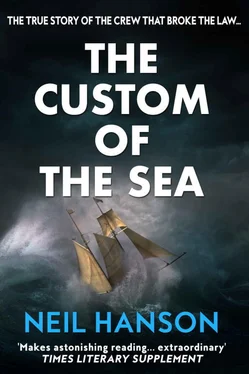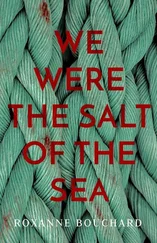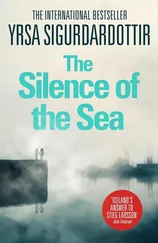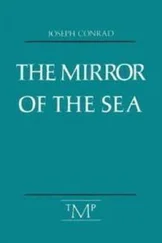He made his last voyage in 1898, at the age of fifty, serving as mate on the steamship Jourcoing on a voyage from Portsmouth to Sardinia. He never went to sea again. Prone to continued and increasingly severe fits of depression and alcoholism, he found work of any sort hard to come by, and died a pauper in Hull, aged sixty-six, on 25 June 1914.
Ned Brooks continued to exhibit himself in museums and travelling freak shows for a few more months, but as the case of the Mignonette faded from the public memory and the showmen sought ever newer and more exotic attractions, he soon found himself out of work. He returned to Southampton and the money he had earned brought him no lasting benefit.
No record exists of the wife and children he was rumoured to have abandoned at the time of the Mignonette’s voyage, but he did marry in 1891, and found work as a rigger and yacht hand, and as a seaman on the Isle of Wight ferries. He even sailed on a yacht, the Una , for a while with a cousin of Richard Parker.
He continued to live in and around Southampton and at one point was living in Richard’s old village of Itchen Ferry, in a house on Smith’s Quay. ‘Curly’ Bedford, another relative of the dead boy, reported that he would often hear Brooks staggering home drunk and crying out in the night, ‘I didn’t do it.’
Like Edwin Stephens, Brooks died in poverty, succumbing to a heart attack in Southampton Parish Infirmary on 22 July 1919, aged seventy-three.
In memory of Richard Parker, an inscribed tombstone was placed over the previously unmarked graves of his parents in Pear Tree Churchyard, Itchen Ferry. It was maintained in pristine condition for many years. No one in the parish knew who cleaned the stone and tended the grave at dead of night, but local tradition had it that, before leaving England, Tom Dudley had arranged for someone to do so. Although Tom was in poor financial straits at the time, he retained none of the surplus money from the defence fund, donating it, as he had pledged, to pay for the education of Richard’s sister Edith.
The inscription on the boy’s gravestone originally read: ‘Sacred to the memory of Richard Parker, aged seventeen years, who died at sea after nineteen days’ dreadful suffering in an open boat in the tropics, having been shipwrecked on the yacht Mignonette ’.
Beneath it was a quotation from the Book of Job: ‘Though he slay me, yet will I trust him.’
At the insistence of Richard’s elder brother, Daniel, a second inscription, from Acts VII: 60, was added: ‘Lord, lay not this sin to their charge.’
The sinking of the Mignonette and the death of Richard Parker are true events, and much of the dialogue has been based on the court transcripts and other papers accumulated at the time of the trial.
I have taken some small liberties with the course of events, however. I have omitted the surname of the Falmouth pilot Gustavus Lowry Collins to avoid confusion with Tom’s defence lawyer of the same surname, and I have also used dramatic licence in the two incidents where ships approached the castaways but did not stop.
There is no evidence that this happened to the men of the Mignonette but since this is a book about the custom of the sea as well as the specific case of the Mignonette , and it was such a regular and often recorded feature of the hardships of others in a similar plight, I felt it was not inappropriate to include it.
With this important caveat, all events are true or, when re-created, are based on contemporary accounts and the similar experiences of other shipwrecked sailors.
This is not an academic treatise and the text has not been burdened with footnotes. The primary and secondary sources I have drawn on in researching this book are detailed in the bibliography, but no one can write about the Mignonette without acknowledging a considerable debt to Professor A. W. B. Simpson and his splendid book on the legal aspects of the case of Regina versus Dudley and Stephens: Cannibalism and the Common Law .
The disproportionate glow of achievement I felt when unearthing a document or reference that Professor Simpson had not already discovered and annotated is its own tribute to the thoroughness of his meticulous research. I am also grateful to him for permission to quote from his interview with a distant relative of Richard Parker, Ivor Bedford, from whom comes the story of Ned Brooks crying out in the night, and from his interview with Vernon Cole. Frank Robb’s Handling Small Boats in Heavy Weather is an invaluable guide to avoiding and surviving shipwreck, and the accounts of many survivors are contained in E. C. B. and Kenneth Lee’s excellent Safety and Survival at Sea . David Thornton’s Plough & Sail is an affectionate remembrance of the Tollesbury area in the nineteenth century, and George Peters’s The Plimsoll Line is a lucid account of Samuel Plimsoll’s lifelong campaigns on behalf of seamen.
Stan Hugill’s Sailortown vividly re-creates the murky dockside world of Victorian seamen. Those interested in delving further into freak shows and ‘museums’ should consult Robert Bogdan’s splendid Freak Show : Presenting Human Oddities for Amusement and Profit . The Victorian prison system is explored in Anthony Babington’s The English Bastille : A History of Newgate Gaol and Prison Conditions in Britain 1188–1902 , and John Camp’s Holloway Prison .
My personal thanks go to Mark Lucas and Sally Hughes at Lucas Alexander Whitley, and to Patrick Janson-Smith, Marianne Velmans, Bill Scott-Kerr, Sheila Lee, Henry Steadman, Michelle Kane and the rest of the team at Transworld. Their professionalism and enthusiasm make it a pleasure to work with them.
My thanks also to Pete Metcalf for information on the law and court procedures in the nineteenth century, Robin Poulier for his advice on the physiological effects of drinking sea-water and urine, Ian Platts and Gavin Craig for helping this landlubber to understand something of yachts and sailing, Simon Wilkinson for finding a photographer at the far end of the country at five minutes notice and Jo, Julie, Belle and Bridget at Just A Sec for transcribing my inaudible tapes into a workable typescript.
I am also grateful to Kathy Wallace and Alex Hooper at the Falmouth Art Gallery, the staff of the Falmouth Public Library, Captain George Hogg, Roger Stephens and the staff of the Falmouth Maritime Museum, Mr Peter Gilson, Honorary Librarian at the Royal Cornwall Polytechnic Society, the Woodrolfe Shipyard at Tollesbury, the Curator of the Brightlingsea Museum, Helen Langley of the Department of Special Collections and Western Manuscripts at the Bodleian Library, and the staffs of the British Library at St Pancras, the British Library Newspaper Section at Colindale, the Public Record Office at Kew, the National Maritime Museum at Greenwich, Ilkley Library, Bradford Reference Library, Leeds Reference Library and the innumerable other institutions and individuals who have given willingly of their time and knowledge in dealing with my endless queries.
Newspapers
Bristol Gazette; Bristol Mercury; Colchester Chronicle; Colchester Mercury and Essex Express; Commercial Shipping & General Advertiser; Cornubian; Daily Recorder; Daily Telegraph; Devon Evening Express; Essex Standard; Exeter & Plymouth Gazette; Falmouth News Slip; Falmouth Packet; Falmouth & Penryn Weekly Times; Field; Fun; Graphic; Hunt’s Yacht List; Hunt’s Yachting Magazine; Illustrated London News; Illustrated Police News; Limerick Star & Evening Post; Limerick Times; Liverpool Weekly Post; Mariner’s Mirror; Morning Post; National Review; New York Herald; New York Times; Pall Mall Gazette; Penny Illustrated Newspaper; Philadelphia Public Ledger; Pictorial News; Pictorial World; Plymouth Weekly Mercury; Police Guardian; Punch; Royal Cornwall Gazette; Saturday Review; Singapore Daily Times; Southampton Observer & Winchester News; Southampton Times & Hampshire Express; Southern Echo; Spectator; Standard; Straits Observer; Sutton Herald; Sydney Gazette; Sydney Mail; Sydney Morning Herald; Sydney Daily Telegraph; The Times; Weekly Mercury; West Briton; Western Weekly News.
Читать дальше











